Metric System - Definition, Examples, Quiz, FAQ, Trivia
Learn about measurement units used around the world with clear explanations and activities
What is the Metric System?
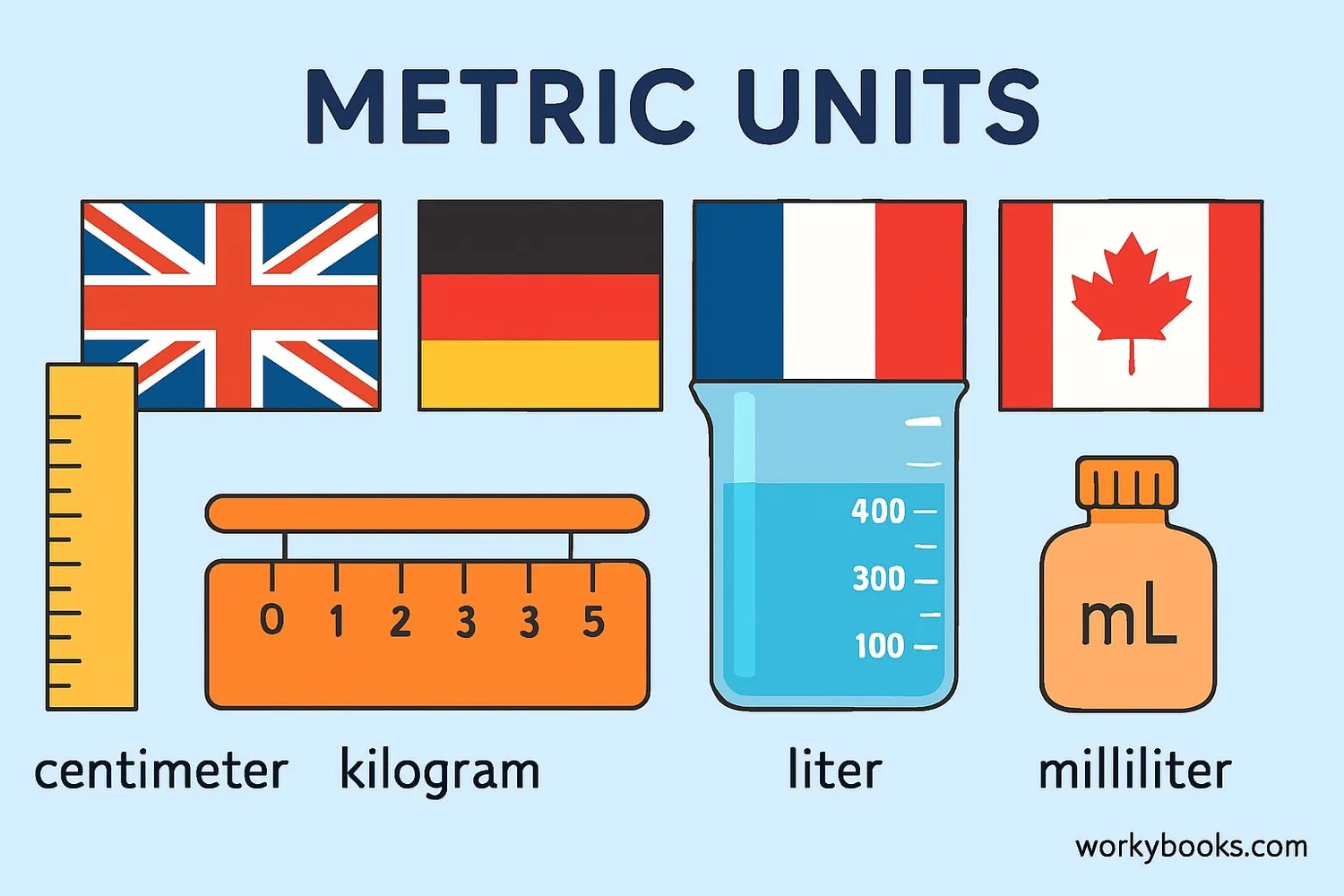
The metric system is a way to measure things that people all around the world use. It's based on the number 10, which makes it easy to convert between different units. The official name is the International System of Units (SI).
The metric system has:
- Base units for measuring length, mass, volume, and temperature
- Prefixes that make units larger or smaller (like kilo- for thousand)
- Decimal relationships (all units are multiples of 10)
Over 95% of the world's population uses the metric system! Scientists use it because it's consistent and easy to work with.
Key Concept
The metric system is decimal-based - all units relate to each other by powers of 10, making conversions simple.
Metric Units of Length
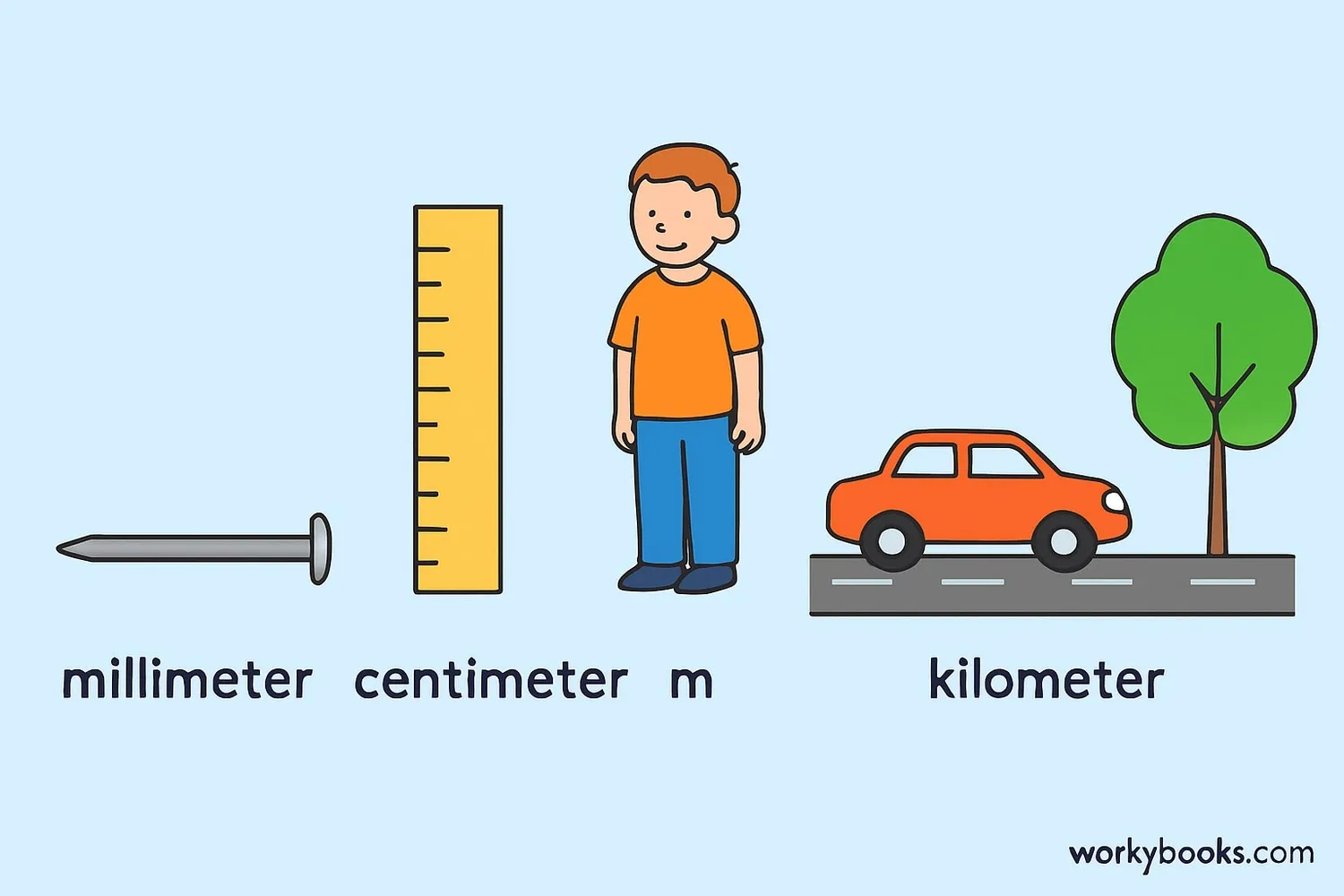
We measure how long or tall something is using metric units of length. The base unit is the meter (m).
Here are the most common length units:
Millimeter (mm)
1/1000 of a meter
Thickness of a dime
Centimeter (cm)
1/100 of a meter
Width of a paperclip
Meter (m)
Base unit
Height of a doorknob
Kilometer (km)
1000 meters
Length of 10 football fields
Length Conversion
1 m = 100 cm
1 cm = 10 mm
To convert between units, move the decimal point left or right.
Remember
A meter is about the length of a baseball bat. A kilometer is about the length of 12 football fields.
Metric Units of Mass
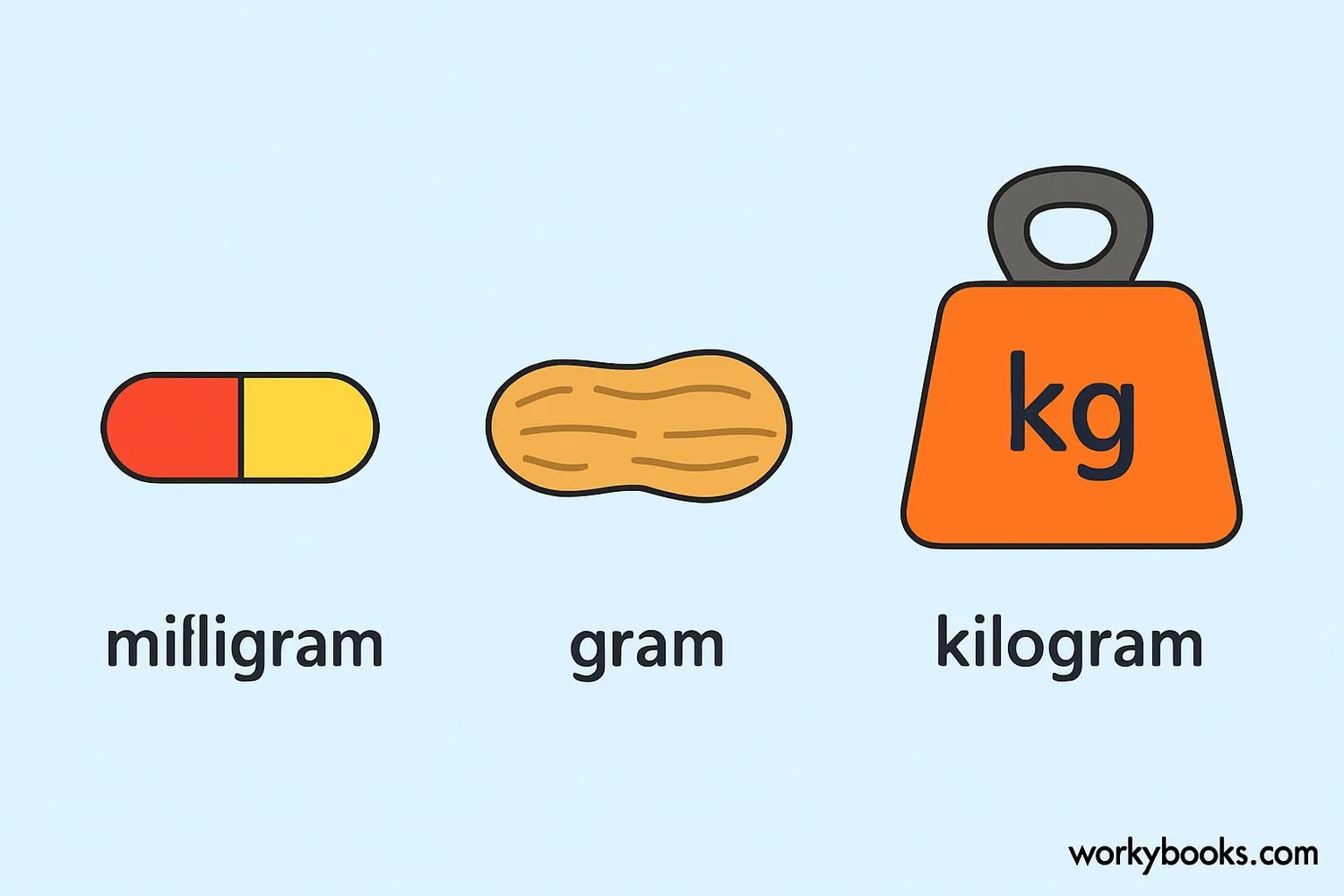
We measure how heavy something is using metric units of mass. The base unit is the gram (g).
Here are the most common mass units:
Milligram (mg)
1/1000 of a gram
Weight of a grain of sand
Gram (g)
Base unit
Weight of a paperclip
Kilogram (kg)
1000 grams
Weight of a textbook
Mass Conversion
1 g = 1000 mg
Just like with length, we move the decimal point to convert between units.
Remember
Mass measures how much matter is in an object, while weight measures the pull of gravity on that mass.
Metric Units of Volume
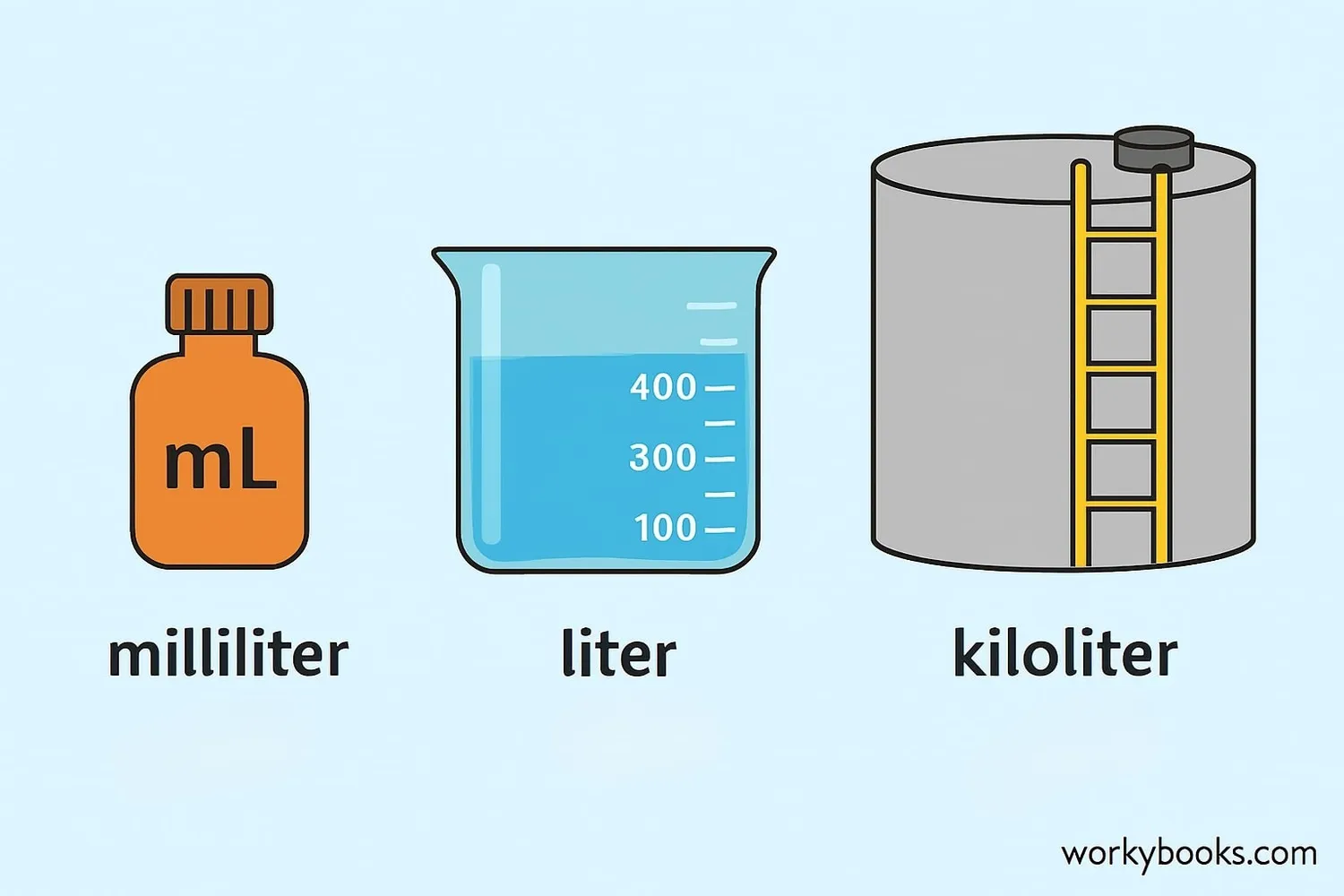
We measure how much space something takes up using metric units of volume. The base unit is the liter (L).
Here are the most common volume units:
Milliliter (mL)
1/1000 of a liter
Volume of an eyedropper
Liter (L)
Base unit
Volume of a water bottle
Kiloliter (kL)
1000 liters
Volume of a small car
Volume Conversion
1 L = 1000 mL
Volume conversions follow the same decimal pattern as length and mass.
Remember
1 milliliter is exactly the same volume as 1 cubic centimeter (cm³).
Metric Units of Temperature
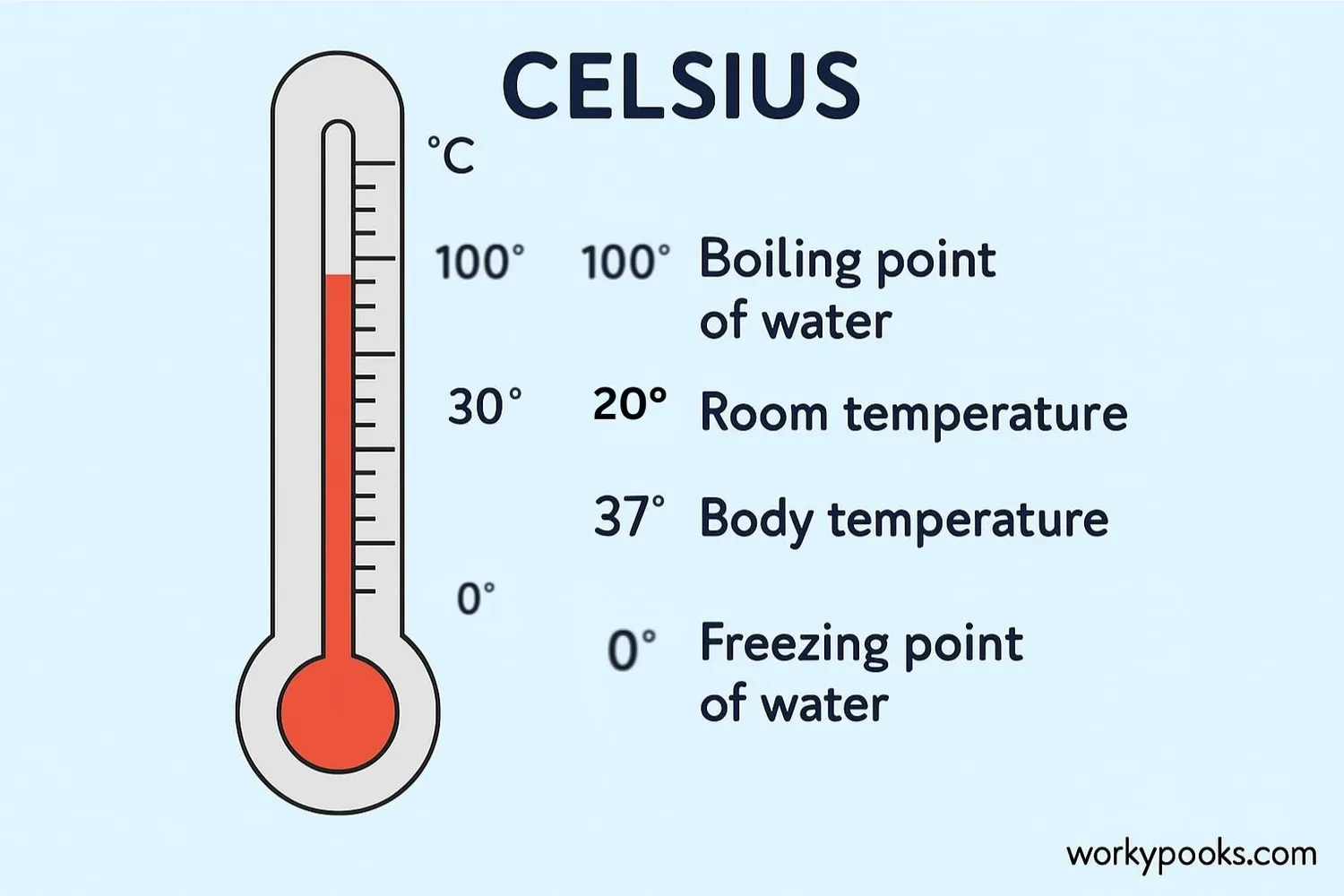
We measure how hot or cold something is using the Celsius scale (°C). Water freezes at 0°C and boils at 100°C.
Important temperatures to remember:
- 0°C - Water freezes
- 20°C - Comfortable room temperature
- 37°C - Normal human body temperature
- 100°C - Water boils
Remember
Scientists sometimes use Kelvin (K) for very precise measurements, but Celsius is used for everyday temperatures.
Metric Prefixes
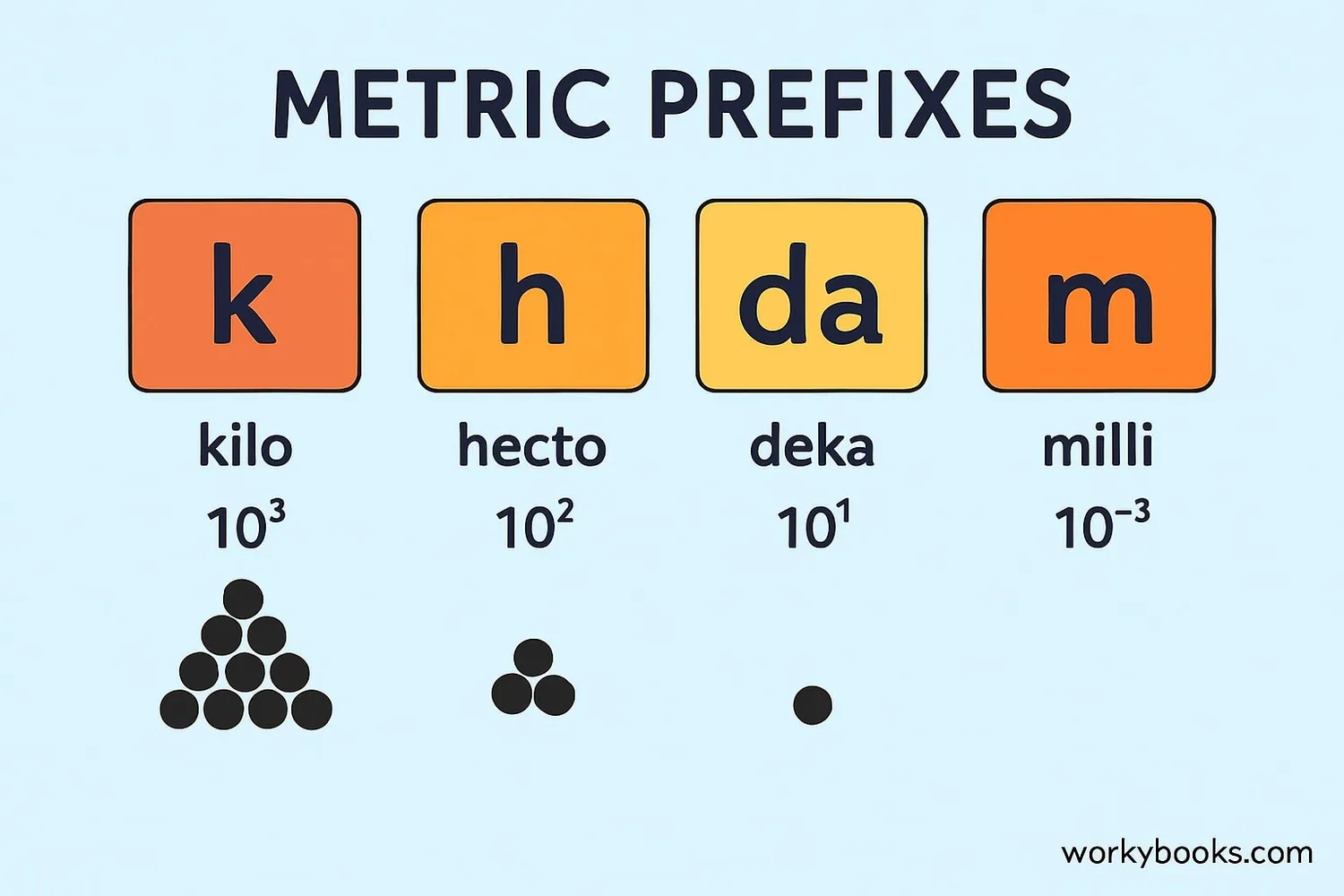
Metric prefixes make units larger or smaller by powers of ten. They can be added to any base unit (meter, gram, liter).
Here are the most common prefixes:
kilo-
k (1000)
kilogram (kg) = 1000 grams
hecto-
h (100)
hectometer (hm) = 100 meters
deka-
da (10)
dekaliter (daL) = 10 liters
deci-
d (0.1)
decimeter (dm) = 0.1 meters
centi-
c (0.01)
centimeter (cm) = 0.01 meters
milli-
m (0.001)
milligram (mg) = 0.001 grams
Remember
Moving from smaller to larger prefixes? Move the decimal point to the left. From larger to smaller? Move it to the right.
Metric System Quiz
Test your knowledge with this 5-question quiz. Choose the correct answer for each question.
Frequently Asked Questions
Here are answers to common questions about the metric system:
Measurement Trivia
Discover interesting facts about measurement systems:
The Original Meter
The first official meter was defined in 1793 as one ten-millionth of the distance from the North Pole to the Equator through Paris. Today, it's defined by the speed of light!
Kilogram Definition
Until 2019, the kilogram was defined by a physical cylinder of platinum-iridium alloy kept in France. Now it's defined using Planck's constant from quantum physics.
Metric in Space
NASA uses metric measurements for all space missions. In 1999, a $125 million Mars orbiter was lost because one engineering team used metric units while another used imperial units.
Tallest Mountain
Mount Everest is approximately 8,848 meters tall. That's about 8.8 kilometers or 884,800 centimeters from base to summit!


